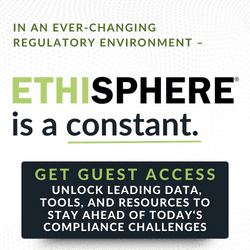Roger Carson, Co-Founder and Global Financial Sales Director at encompass corporation, introduces the concept of digital know your customer (KYC) profiles. Created by intelligent automation, digital KYC profiles help financial institutions manage and retain valuable information, control complexity and reduce costs while improving compliance.
The KYC Legacy
KYC can prove difficult for financial institutions of all sizes; it is often a complex operation across middle and back offices, involving large teams of specialists. However, it can be made simpler through digital transformation.
With KYC, the information required for due diligence usually originates outside of financial institutions. Third parties, including government agencies responsible for registries of companies and firms specializing in credit and risk assessment, manage data sets in digital format. They publish these either via their own web interfaces, where they are searchable, or as APIs, which allow institutions to choose how they integrate streams of information into their operations. Originally, much of this data was paper based and delivered physically, while later data sets became available for download in electronic formats, commonly PDF files.
The origins of many of the processes and operations in place today predate digitized data distribution, and many remain rooted in an era of manually downloading electronic files, which can also be problematic.
Typical processes combine manual tasks of creating electronic documents with communications activity, where documents are saved to shared drives or sent as attachments to emails. The result of these activities is an assortment of information referred to as a KYC file.
A KYC file includes primary documents from independent, trusted sources of information and secondary documents, which may include spreadsheets and presentation slides showing KYC analysts’ integration, data linking, analysis and interpretation.
The work of manually creating a KYC file can bring difficulties for several reasons, including:
- Gathering the required information manually is time consuming.
- The process is error-prone; humans can make mistakes.
- Operational errors are caused when policies are applied inconsistently.
- A firm not performing these tasks consistently is at risk of regulatory action.
The Digital Solution
Financial institutions can replace approaches conceived in the pre-digital era that are now outdated. When institutions digitize their KYC processes at the onboarding stage, they create a digital KYC profile of each customer. This profile then persists throughout the life of their business relationship.
This includes all primary sources prescribed by an institution’s policies, while all facts material to anti-money laundering and counter-terrorism financing (AML/CTF) regulations are securely recorded. These facts can be displayed, with easy-to-navigate charts showing connections, which accelerates understanding of complicated situations. These products eliminate the routine work that proves so difficult, error-prone and costly when left to humans.
Using automation frees professionals to focus on the essence of KYC, which is assessing factual evidence to establish risks to their institution.
Manual vs. Digital
With the growing technology at their disposal, businesses face the task of aligning their thinking toward technological advancements – much like people have had to as the evolvement of social media has gathered pace.
Before social media platforms came to the fore, many people used Microsoft Outlook address books, which they would have to spend a considerable amount of time updating by contacting those listed in order to verify the information was still up-to-date if they hadn’t already been alerted to changes, particularly in relation to job or contact details.
Now, with social media – and particularly LinkedIn – this trawling isn’t necessary. Updates on job statuses and contact details are much more accessible; they are presented in news feeds and regularly posted in a way that means information can be kept current in a much quicker, easier and more efficient way.
This is also the case when it comes to looking at KYC profiles and comparing manual methods to automation and digital processes.
While a KYC file is created for each client at the time of onboarding, its contents must be continually reviewed and manually updated throughout the customer life cycle.
It is during this review work that the burden of traditional KYC can become clear. Here, analysts must compare current information with that collected in the previous round of activity and then identify and record any changes. The task is complex for a number of reasons – none more so than the fact that those responsible for KYC operations are likely to be different individuals during each round of refresh and monitoring, and the shortcuts of one analyst become problems to solve for a colleague.
A KYC file’s combination of primary and secondary documents also becomes harder to manage at every stage of the customer life cycle beyond onboarding. For example, when unwrapping the corporate structure of a company operating internationally and owned overseas, information sourced from multiple company registries must be duplicated from these primary documents to one or more secondary documents used to map the entire structure, which may include subsidiaries, holding companies, beneficial owners and PEPs.
Each electronic document within the KYC file existing in isolation can bring challenges, too, as connections between facts found in primary sources and represented in secondary documents are known by individual analysts. This valuable information can be lost to the process as analysts move to their next task or leave for other employment. When this happens and a KYC file is later reopened, analysts must relearn knowledge of how facts originating in primary documents map to their use in secondary documents, which again takes time and effort away from other areas of the business.
Where, as examined, manual processes can prove daunting, digital KYC profiles fundamentally recast the KYC operations of refresh and monitoring.
Conclusion
It is clear that there are numerous significant advantages to utilizing technology, and particularly automation, in this way, including:
- Work that previously took up skilled analysts’ time is now automated, meaning valuable time can be spent on other duties.
- Institutions enforce policies that decrease the possibility of operational risk by taking away the possibility of human error.
- They gain control over information collecting.
- More attention is given to the work essential to compliance.
- Overall costs are reduced.
During an era in which regulatory pressures are mounting and the spotlight on KYC is intensifying, it is a false economy not to use the technological solutions that are available.
This article was originally shared by encompass corporation and is republished here with permission.



 Roger Carson is Co-Founder & Global Financial Sales Director at
Roger Carson is Co-Founder & Global Financial Sales Director at 








